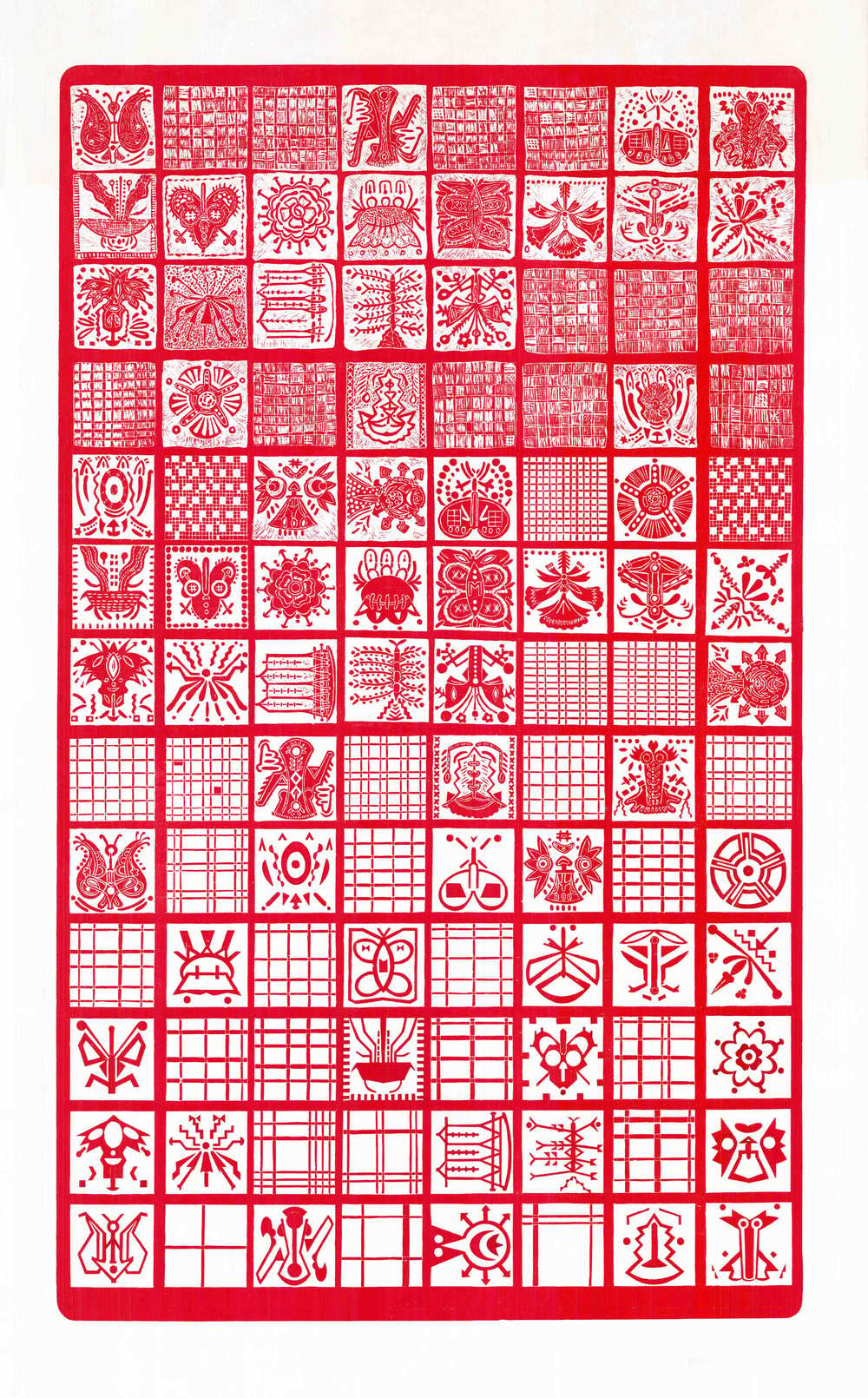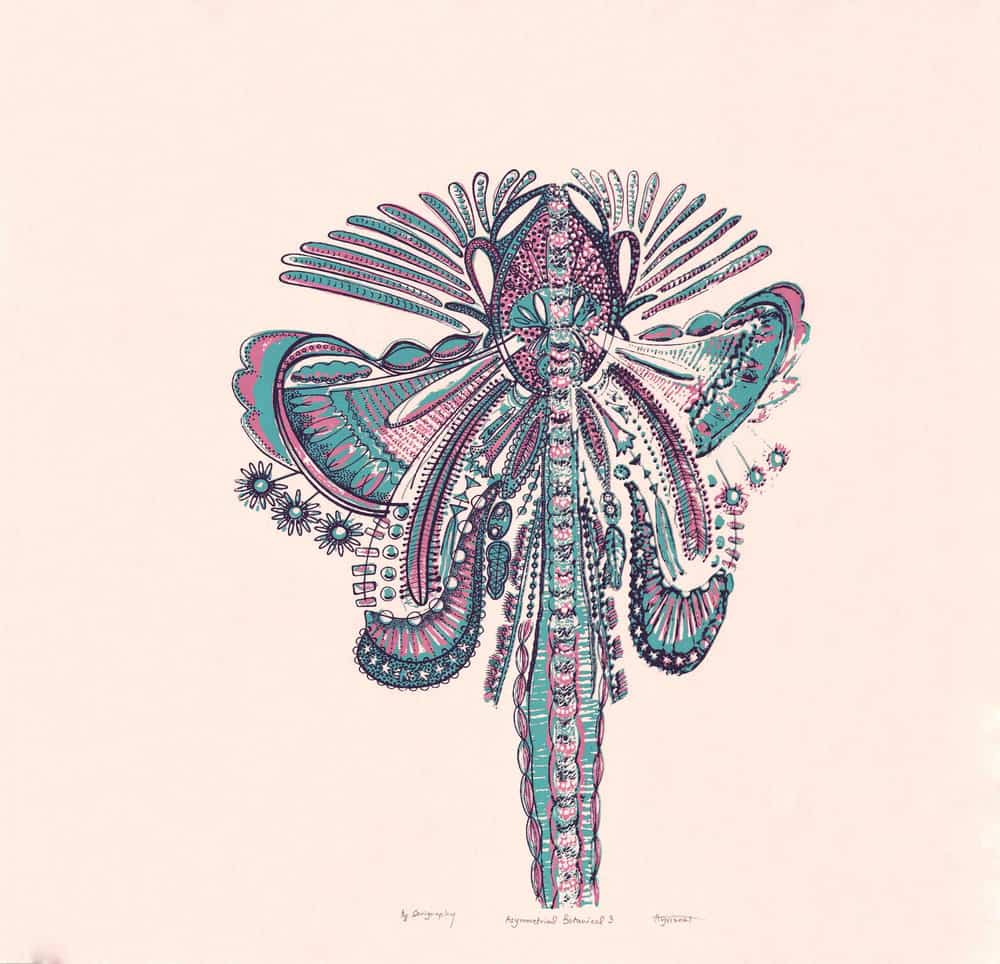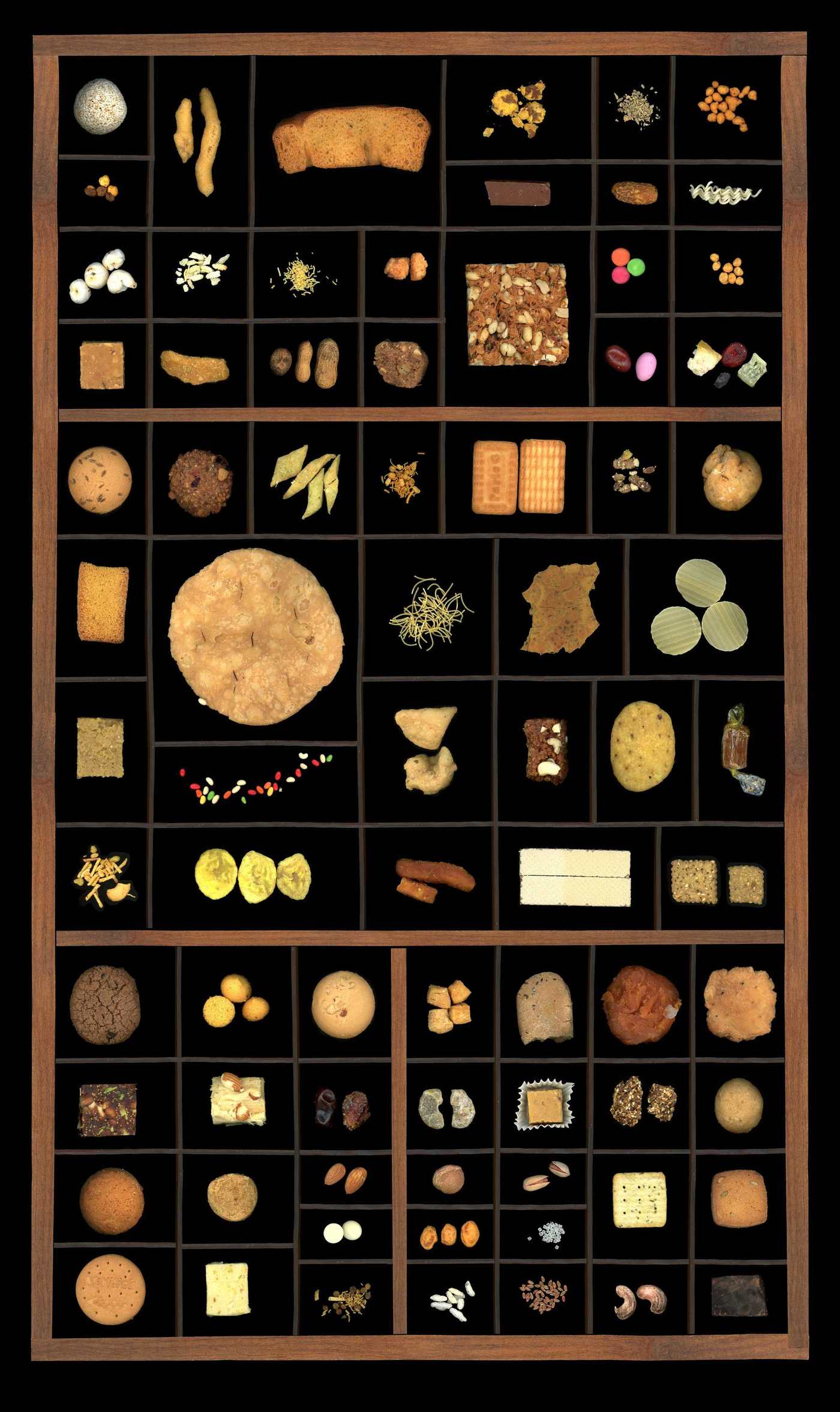#InConversation with Avni Bansal
By Sanjana Srinivasan | Jan 20 2023 · 7 min read
Avni Bansal's solo online viewing room, Slivers of My Existence, presents a selection of works by the Chandigarh-based artist, who pieces together fragments from her personal, and larger cultural life, to create artworks that illustrate her lived experiences. Here, Sanjana Srinivasan speaks to Avni about her influences, inspirations, and the future.


The Shifting Traditions, 2022


Asymmetrical Botanical III, 2021
Sanjana - Since your solo OVR, Slivers of My Existence, gives a picture of your inspirations and thematic concerns, I thought we could start off by talking about your choice to primarily use the woodcut printing process. Can you tell me more about your affinity towards the medium?
Avni - I think expressions should definitely be given more weightage over medium. But yes, mediums do play a major role in the expansion of those ideas more impactfully and convincingly. In fact, many times, mediums give more concrete validation to our thoughts. And the same is true in my case. If you see my works, I take inspiration from the motifs and symbolism present in the vernacular arts of India. But I am also intrigued by the woodblock printing and screen printing techniques used in India for the past many centuries to create these motifs and textiles. I was taught both these techniques during my time as a student at the Maharaja Sayajirao University, Baroda, and thus started using these traditional methods in a more contemporary setup—to represent the conventional ideas with revised themes such as the shift in aesthetic choices from more detailed to flat, minimalistic ones presented in the work The Shifting Traditions or the break in the idea of adjacent harmony present in the old murals of Mughal architecture as depicted in the work The Asymmetrical Botanicals.
Sanjana - I find it very interesting that sometimes your artworks take the form of the very symbols and visual vocabulary that you draw from (say, garlands and borders) and are rooted to something that we are familiar with, yet other times, they are completely different and imaginative, unlike anything we have seen before. Can you speak a little bit about the process of creating these forms? Is that something pre-planned?
Avni - It all starts with revisiting and responding to my memories, experiences and immediate culture, which become the basis of all the forms I create. Sometimes it's an amalgamation of all the free flowing thoughts that come to me intuitively. Continuous drawing helps me develop a vocabulary that is individualistic to me. Many times, I am inspired by this vocabulary to create more elaborate works. The exercise to constantly develop these imaginative forms helps me navigate my own voice as an artist. The idea is to create a whimsical world beyond reality. And many times, as you said, it is rooted to the culture that I am living in. Presently, I am trying to recognize and pull out particular aspects of the rituals, habits, and behaviours in Indian culture (i.e., from both historical and existent cultural environments) and represent them in the form of new motifs, symbols and visuals.
Sanjana - What is the process of creating your own visual vocabulary like—of breaking down something, and creating something else after experiencing it? And how do you view that new form? As a translation? As a new referent? What do you hope your works to convey, for this language to convey?
Avni - My urge to explore, transform and give new form and meaning to the existing natural and man-made objects, amorphic and definite shapes makes me deconstruct, and break down the surroundings around me. It also pushes me to reconstruct the forms that I have already created. It is about giving new existence and meaning to each form by putting them into different settings and contexts. Also, printmaking as a medium gives me the privilege to print multiples of a single image which I try to place in different contexts. These multiples act like the components of a larger puzzle, whose final picture is little known to me. I consider my visuals as initiators of thoughts, poking the viewers to delve deep into their memories and visual vocabulary and question the identity of the forms to interpret it as per their own subjective worldview. The works may seem purely abstract but they do have a structure known to the human mind.
Sanjana - Speaking of the various things that inspire you, and that you put together to form a larger whole—how is the practice of collecting these small parts or ideas or even the objects you literally collect and scan linked to your work?
Avni - The scanography? It started with the idea of documenting and archiving my immediate reality—the present culture that I am living in. As we all are journeying towards a digital age, I wanted to bridge the gap between the physical and the digital world. Thus I decided to create a digital archive of objects that are present in my physical reality through scanography. The things that I scan are mostly the things that I am regularly acquainted with in my day to day life. They are objects that define my living, my capacity to purchase the set of products in the market, and my status in the society. For example, in the work My Pleasure Cupboard, I am talking about the eating habits in Punjabi culture—what all we like to serve to the guests, the choices of our guests, how much they relish it, how much I also relish it. The Gold Rush on the other hand, indicates the liking for the gold colour in our society—how people around me tend to buy things in this colour, how it has become a symbol of attraction, luxury, and prominence. However, my collection further facilitates the creation of new forms and motifs.


My Pleasure Cupboard, 2022
Sanjana - Let's speak about your choice of colour. For some reason, when I think about your work, a wide range of images (i.e., all the things that inspire you) come to my mind—and it is so colourful! Yet, your choice of colour is very specific. Any reason why?
Avni - If you see my initial works, you will find a much wider colour palette. It has reduced over time as my practice has evolved. There are works where I want to create a whimsical world beyond reality, where I do use multiple colours to shape them elaborately. But I want to maintain the monochromaticity for most of my projects as it removes confusion and brings simplicity to the work. As the colour reduces, the ideation and contextualization becomes the dominant part of the image. Currently, I am using a lot of blacks and reds, as I feel these two colours strongly signify Indian culture—which is the chief stimulant for my recent works.
Sanjana - Chief? Whose artwork are you inspired by when it comes to your practice?
Avni - Kiki Smith, Sun Xun, Sopheap Pich and NS Harsha for how innocently and simply they have presented the culture they belong to.
Sanjana - Lastly, how do you feel your journey has been like? Where do you see yourself heading?
Avni - It has been a slow, steady but a very learned journey for me. I am deep diving into the realm of visual arts, having become much more open to understanding various art practices across multiple disciplines and how they initiate conversations within the society. This exercise is giving me more clarity about my position as a visual artist in the bigger scenario. I think my subject matter has become more concrete and bold over time and my visuals have definitely become more engaging both aesthetically and conceptually. I want to continue this journey of expressing myself forever. I envision to grow both spiritually and intellectually and want the same to reflect in my artworks.
View Slivers of My Existence on Terrain.art.

